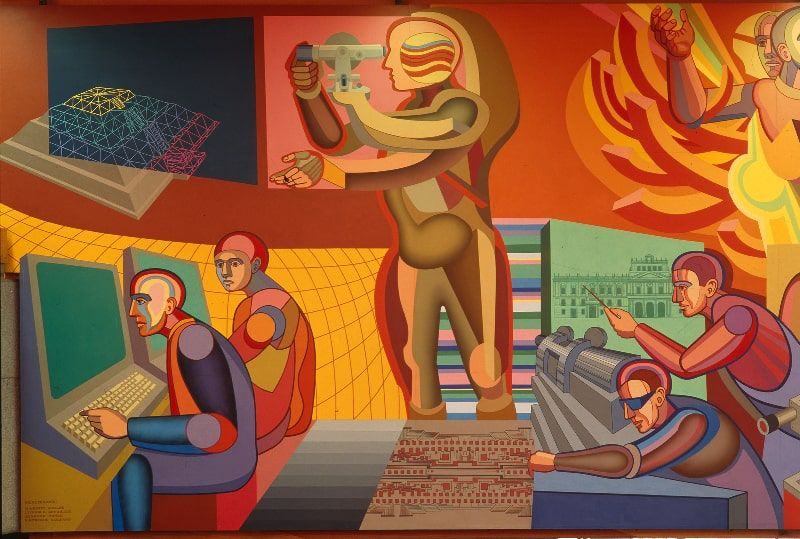Mural "Inventing the future" by Arnold Belkin (Inventando el futuro)
The mural "Inventing the Future" by Arnold Belkin, of 42 square meters, corresponds to the last stage of the artist's production. It is so named because it shows the visionary capacity of engineering to improve living conditions.





